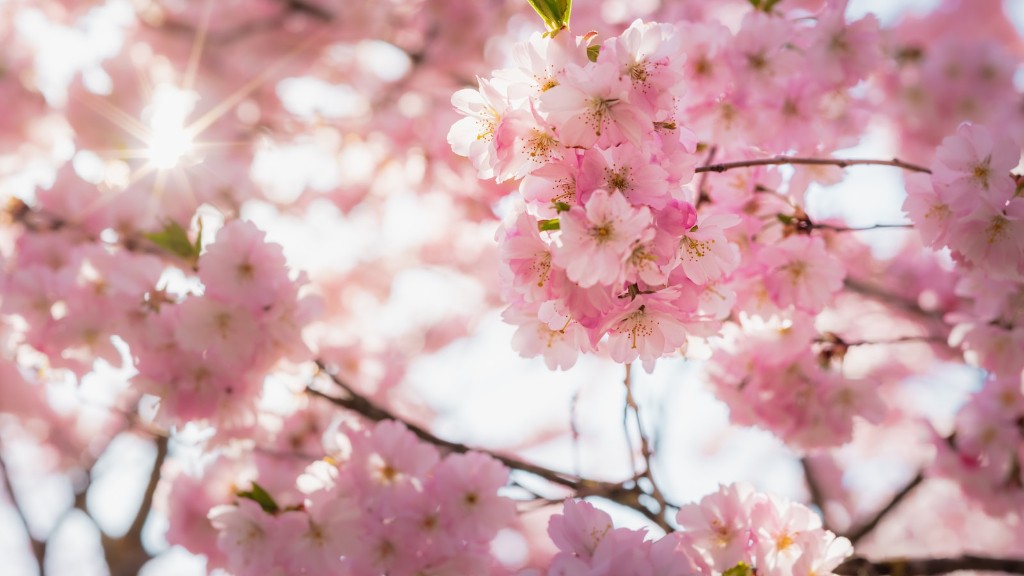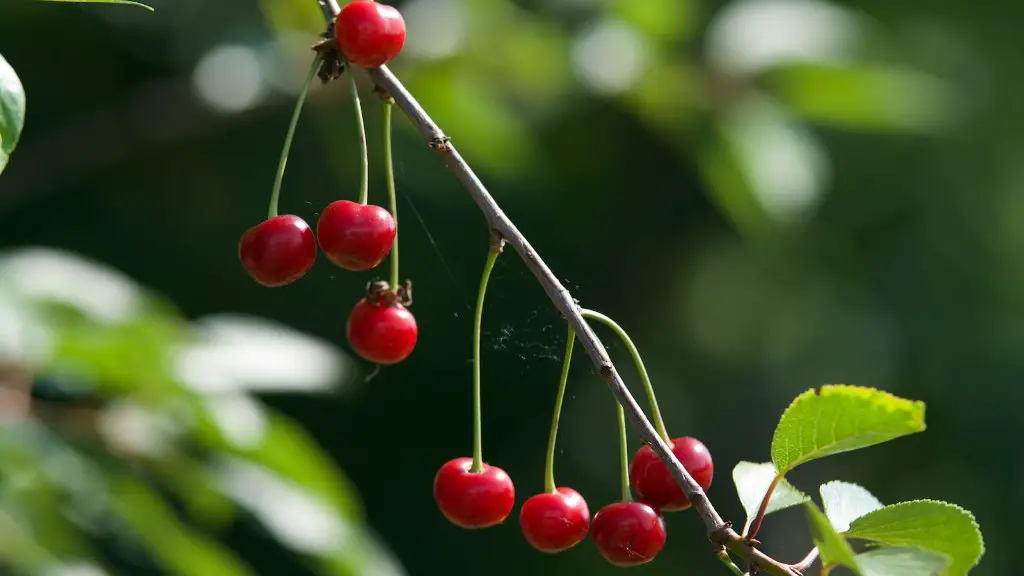Caring for a patio lemon tree requires diligence and knowledge of their unique requirements. The key to long-term maintenance of a healthy lemon tree is providing it with the right environment and adequate nutrition. To ensure success, let’s review some important tips for providing the best care for your patio lemon tree.
Not surprisingly, the most important factor for lemon tree health is an adequate supply of water. Though you may not experience rain, water is essential for the survival of these trees. You need to water them on a regular basis, taking into consideration their drainage requirements and the type of soil in which they are planted. A deep watering is usually sufficient, followed by a slow trickle each week. If necessary, you should modify your water distribution schedule as the season progresses.
The proper temperature is also important for your lemon tree’s health. In winter, cold temperatures can damage the tender plants, and in summer, too much heat can cause excessive evaporation. Try to keep your tree’s temperature between 25-30 degrees Celsius (77-86 degrees Fahrenheit). If the temperature drops below 0 degrees Celsius (32 degrees Fahrenheit), move the tree to a warmer area. If the temperature rises above 40 degrees Celsius (104 degrees Fahrenheit), provide shade or a misting system.
Lemon trees need a lot of light, so choose a location that gets plenty of sunshine. Also, allow for adequate air circulation around the tree. Pruning can help with air circulation as well. Pruning also helps maintain the size of the tree and lets you control how much fruit is produced. When pruning, use clean, sharp shears and avoid cutting branches too close to their base.
Nutrients are essential for keeping your lemon tree healthy, so it’s important to provide your tree with the proper fertilizer. Choose a fertilizer designed specifically for citrus trees and avoid applying too much, as this can burn the roots. You can also add some organic material to your soil to provide extra nutrients. If you’re unsure which fertilizer to choose, consult a knowledgeable garden center.
Finally, it is important to monitor your lemon tree for any signs of disease or insect infestation. If you identify any issues, take the appropriate steps to treat the problem. Take special care of your tree in warm, wet weather, as this can foster fungal and bacterial growth. Regular pruning can also help reduce disease and encouraging the development of healthy new branches.
Fertilizing a Patio Lemon Tree
Fertilizing a patio lemon tree is an important part of its routine care. A high quality fertilizer should contain essential nutrients such as nitrogen, phosphorus, and potassium as well as trace minerals like iron and zinc. These nutrients help the tree grow foliage, bloom, and produce fruit successfully. It is important to choose a fertilizer specifically formulated for citrus trees to ensure its nutrients are suitable for these types of plants.
Lemon trees require fertilization throughout the year, during the active growing periods. This is typically during the spring and summer months. Start fertilizing in early spring when the tree begins to form new leaves and flower buds. Apply a nitrogen-rich fertilizer, such as a citrus tree fertilizer with twice the amount of nitrogen as phosphorus, at half the recommended rate. Apply twice more during the summer months, aiming for a total of three fertilizer applications.
Before applying the fertilizer, water the tree thoroughly. This will allow the nutrients to easily be absorbed by the roots. Spread the fertilizer evenly all over the entire tree canopy and then, using a rake or hoe, gentle mix it into the soil around the roots. Water the tree again after application to help the fertilizer reach the roots. Too much fertilizer can shock the plant so be sure to follow the directions on the package to ensure proper application.
It is important to closely monitor the health of your patio lemon tree to ensure it is getting the proper nutrition. If you see signs of nutrient deficiency, such as yellow foliage or stunted growth, be sure to supplement your tree’s fertilizer needs.
Protecting Lemon Trees from Pests and Disease
Lemon trees are susceptible to pests and diseases, particularly during warm and wet weather. To protect your patio lemon tree from these threats, you will need to take a proactive approach. Regular inspection and prevention are the best way to protect your lemon tree from pests and diseases.
Be sure to monitor your patio lemon tree for signs of infestation or disease, as early detection is key for successful treatment. Inspect your tree for yellowing leaves, discoloration, or wilting. These can all be signs of a pest or disease problem. Be on the lookout for pests such as aphids, mealybugs, and scales. If you notice an issue, consult an expert or use a natural pesticide to treat the problem.
You can also take preventive measures to keep your lemon tree safe. Regular pruning is one of the best ways to keep disease at bay. Prune away dead and diseased branches, as these can act as a breeding ground for pests and disease. Ensure all tools used for pruning are clean, as a dirty tool can spread disease. Always prune in the morning hours when the plant is still damp with dew.
Creating a rich and healthy soil is also important for keeping your lemon tree from becoming too susceptible to pests and diseases. Provide plenty of organic matter, such as compost. Keep the area free from weeds and debris, as these can harbor pests. A layer of mulch around the base of the tree can also act as a protective barrier.
Pest and disease prevention is an essential part of caring for your patio lemon tree. Regular inspection and preventive measures, such as pruning and creating healthy soil, can ensure your tree has the best chance for success.
How to Harvest Patio Lemon Fruit
Harvesting patio lemon fruit can be a satisfying experience. Knowing when to harvest is key to getting the most out of your tree. Lemon trees will typically start producing fruit when the tree reaches two to four years old. The fruit will take between six to twelve months to ripen, depending on variety, so be patient.
Lemons on the tree will start out green and then turn yellow as they ripen. You can also squeeze the lemon to test for ripeness as the fruit should be quite soft when ready to be picked. It is best to pick them as soon as they are ready, as leaving the fruit on the tree for too long can cause them to dry out or start to split. Aim to harvest your lemons in the morning hours, when the fruit is still cool from the night.
To harvest, use clean and sharp pruning shears to cut the stem. Avoid handling the fruit too much and be sure to leave a few inches of stem attached to the fruit. Pluck the fruit off the stem and store it in a cool, dry place. This will help minimize bruising and will help the fruit retain its juicy flavor.
Lemons do not keep for too long once harvested, so if you plan on storing them for some time, place them in a sealed plastic bag before refrigerating. They will last for a few weeks in the fridge, or you can freeze them for up to two months.
Harvesting patio lemon fruit is a rewarding experience, and can be a great way to add fresh lemons to your favorite recipes. Be sure to choose the right time for harvesting and store your fruit properly for the best results.
Choosing the Right Patio Lemon Tree
When choosing a patio lemon tree, be sure to get the right variety for your specific needs. There are many different cultivars of lemon trees to choose from, each possessing unique characteristics. Factors such as size, taste, and hardiness should be taken into consideration when selecting the right tree for your home.
For patio lemon trees, it is best to choose a dwarf variety such as Meyer or Eureka. Dwarf varieties are more suited to container growing, as they are smaller in size. If space is limited, these kinds of trees can be ideal, as they can be kept small with regular pruning. They also tend to be more resistant to disease and drought, making them well suited for patio growing.
It is also important to consider the flavor of the lemons your tree produces. Meyer lemons are a popular choice, as their skin is thin and their flavor is sweeter than other varieties. They also tend to produce fruit year-round. If you want a sharp, tart flavor for recipes such as lemon juice and marmalade, Eureka lemons are a good choice.
Finally, consider how much time you are willing to devote to the care of your patio lemon tree. Meyer and Eureka trees require a good amount of maintenance and need to be pruned regularly. If you prefer a tree with less maintenance, look for a variety that is suited to container growing, such as Pixie or Ponderosa.
When selecting the right patio lemon tree for your home, it is important to consider factors such as size, flavor, and level of maintenance to ensure the best choice for your particular needs.
Storing Patio Lemon Fruits
Storing patio lemon fruits can be a tricky task, as they don’t last very long once harvested. The best way to keep your lemons fresh and juicy is to store them in an airtight container in the refrigerator. Placing them in a zippered plastic bag is a good way to help keep moisture in and preserve their flavor.
If you are not planning on using your patio lemons right away, freezing is an option. Before freezing, be sure the lemons are thoroughly washed and dried. Also, some of the juice may spill when thawing out, so it’s best to place them in a sealed bag or container before freezing. Lemons can generally be frozen for up to two months.
It is also possible to dry lemon slices in the oven or a food dehydrator. To do this, slice the lemons as thinly as possible. Place them on a baking sheet lined with parchment paper and dry at the lowest possible temperature. Lemon slices can take anywhere from four to eight hours to dry, depending on the thickness.
Dried lemon slices can be stored for several months in an airtight container or jar in a cool, dry place. They can be eaten as a snack or added to recipes. For example, you can use dried lemon slices as a garnish for salads or to add flavor to stews and other dishes.
Storing patio lemon fruits is a useful way to make the most out of your harvest. Use airtight containers and freezing to maintain quality and use the dried slices in recipes for added flavor.




